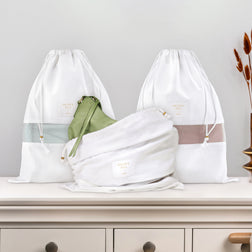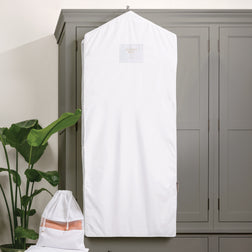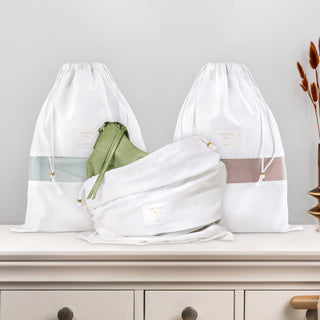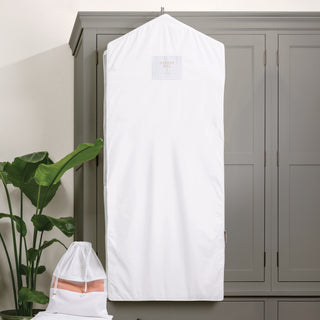When the seasons shift, so does your wardrobe! Storing seasonal clothing isn’t just about making space in your closet—it’s about keeping your clothes in great condition so they’re ready to go when you need them. With the right approach (and a few cotton storage bags), you can keep your off-season wardrobe fresh and protected, without any annoying odours or surprise moth holes. Here’s a step-by-step guide to storage that’ll keep your seasonal clothing looking as good as new.
Step 1: Make Sure Everything's Freshly Cleaned
Before packing anything away, give all your clothes a good wash. This helps remove any dirt, oils, or little stains that might attract pests or set into the fabric over time. For delicates or special pieces, consider hand washing or dry cleaning. This small step makes a huge difference in keeping your cherished pieces in good condition for the long term.
Step 2: Say Goodbye to Plastic—Choose Cotton Storage Bags
Plastic bags and bins might seem convenient, but they’re not ideal for long-term storage. They can trap moisture and don’t allow for any airflow, which can lead to mildew and musty odours. Cotton storage bags are a fantastic alternative—they’re breathable, keeping your clothes dry and fresh, while also blocking out dust and pesky moths.

The reason cotton is so effective for storage? It’s a natural, breathable material that keeps air flowing around your clothes, helping them stay in top shape. Plus, it’s eco-friendly, so you’re cutting down on plastic use as a bonus. Cotton garment bags are especially great for things like coats, knits, and natural fabrics that benefit from a bit of airflow while in storage.
Step 3: Fold Seasonal Clothing Right for the Long Haul
Cosy cashmere jumpers, thick jackets, or heavy trousers—will store best when folded rather than hung. Folding prevents items from stretching out over time and makes them easier to stack and organise. For an extra touch of care, layer some acid-free tissue paper between folds to help prevent creases. Hayden Hill organic cotton storage bags come in all shapes and sizes, so you can find ones that fit all your pieces, from bulky jumpers to lightweight tops.
And if you do have items that are better hung, like delicate blouses or dresses, try our short or long-hanging garment bags. They’re perfect for hanging without leaving your clothes exposed to dust or sunlight, and they give the same breathability benefits as zippered storage bags.
Step 4: Pick the Perfect Storage Spot
Where you put your clothes matters! The best place for storing clothes is somewhere cool, dry, and away from direct sunlight. Avoid basements and attics if you can—humidity and temperature changes in these areas can damage fabrics over time. Wardrobes, under-bed storage, or dedicated storage shelves are all great options, especially when combined with cotton bags. And make sure you’re not cramming things too tightly; giving clothes a little breathing room really helps with maintaining their shape and texture.
Step 5: Keep Pests at Bay
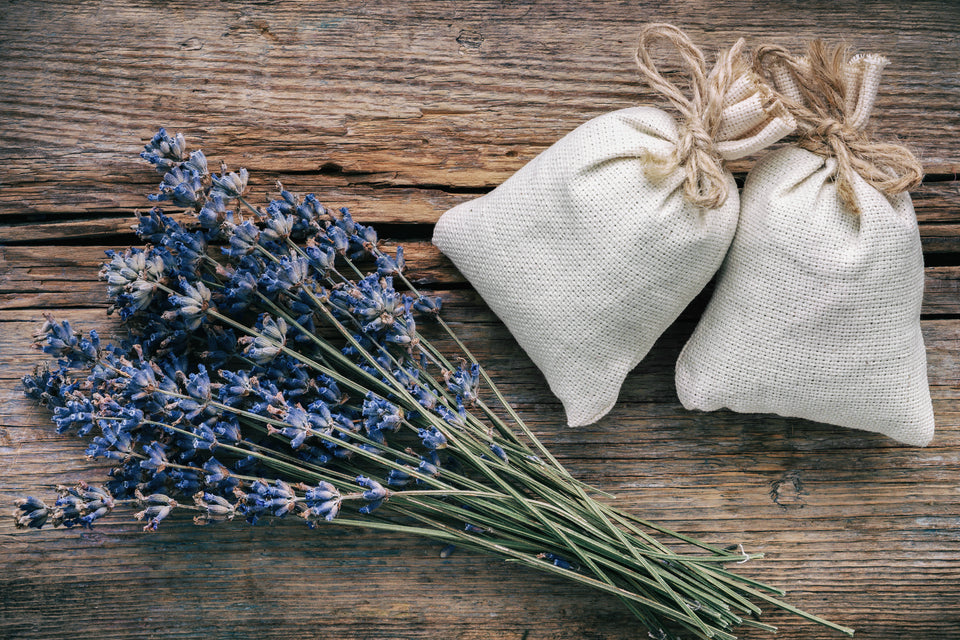
Want to avoid moth holes and other pest damage? Cedar blocks, lavender sachets, and moth traps are great options for keeping insects at bay. These are safe for your clothes, and they don’t come with the harsh chemicals of some pest repellents. Just pop one or two sachets or blocks in each garment bag or set traps in the surrounding storage area to keep everything fresh and protected.
Step 6: Rotate and Refresh with Each Season
When it’s time to bring your stored clothing back out, give each piece a quick check for wear or damage. A fresh wash, a little airing out, and your clothes will be ready to go! Cotton storage bags are reusable, so you can also give them a wash if needed. Here’s a post explaining how to care for Hayden Hill bags.
Choosing cotton storage bags for your seasonal clothing has so many upsides. They help reduce plastic waste (a win for the planet), keep your clothes in better condition with natural airflow, and shield your wardrobe from dust, pests, and moisture. Organic cotton is biodegradable, sustainable, and much kinder to delicate fabrics than plastic, so you’re not only preserving your clothes but also taking an eco-friendly approach to storage.
So when it’s time for your next seasonal wardrobe switch, remember: with a little planning you’ll be all set to keep your clothes organised, fresh, and ready for whatever the weather brings next!

We’d love to hear how you store your seasonal clothing each year. Share your photos, ideas and tips on Instagram and tag us on @hayden_hill_london for a chance to be featured.
